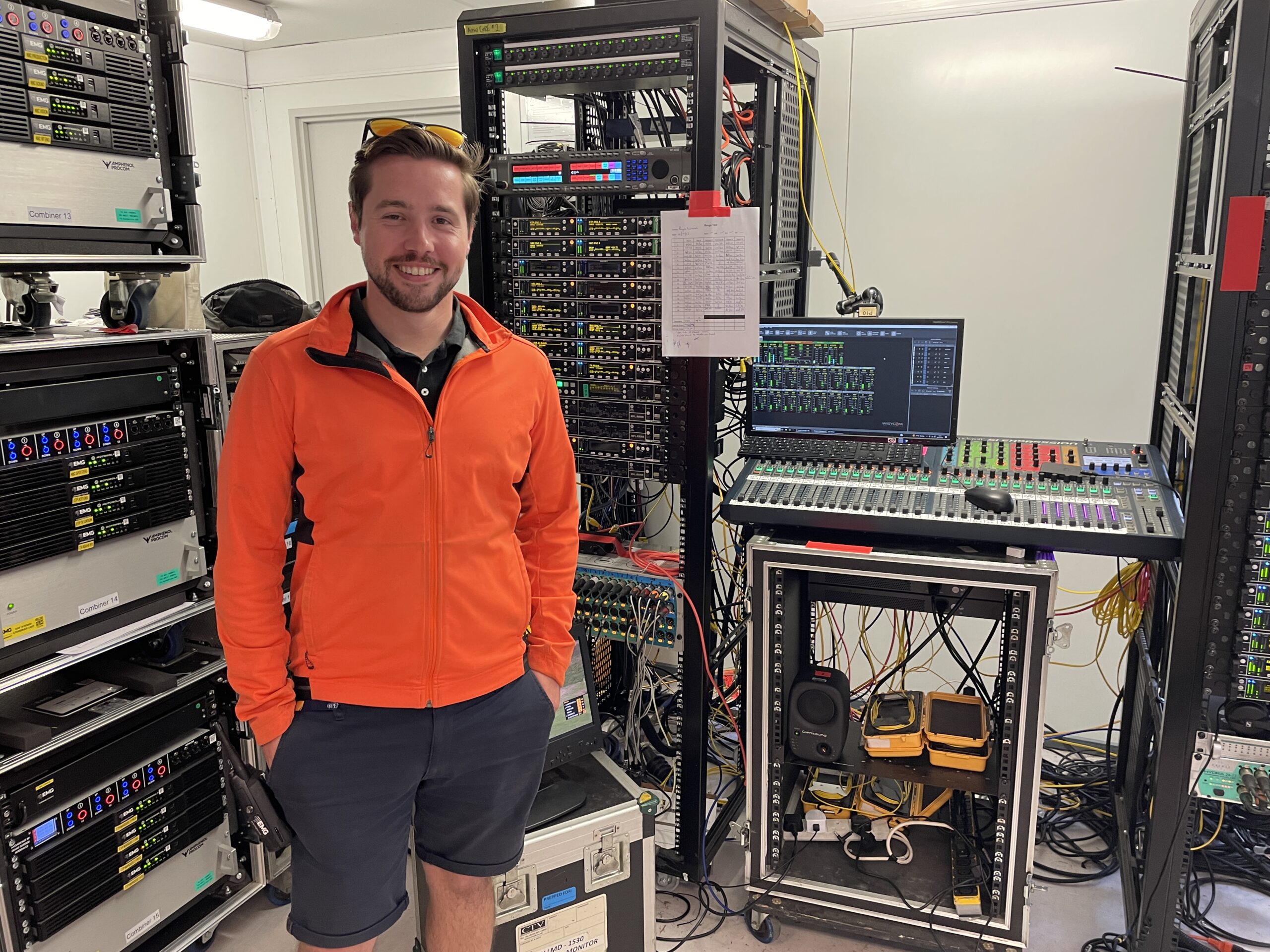Live From the 151st Open Championship: EMG’s RF Audio Lead Harry Lucas Discusses Massive Effort
Story Highlights
The Open is an event unlike any other, says EMG UK RF audio lead Harry Lucas, who is overseeing the provision of talkback and high powered mics at the 151st Open at the Royal Liverpool Golf Club in Hoylake. Lucas and the EMG RF team manage RF for everyone on site at the Open, from those working on the world feed through to all broadcasters.
“Anyone here who has base stations, or high-power kits, it all come through us,” he says. “It makes it easier if we control everything. We can monitor it all, and if there are any issues then it’s either going to be something do with us, or there’s someone doing something they shouldn’t be.”
For Lucas, it’s the largest event he’s ever worked on. “This is just unlike anything else,” he explains. “To put it into perspective, on a normal golf event, we run about 10 base stations, and you’d normally have at most, on the larger events, maybe six on course and eight effects mics. On this, we’re running 72 base stations and 52 high powered mics, which includes on-course mics and fairway walkers.”
Given the size and scale of the operation, there is also an extra crane in use, with three rather than the usual two in operation.
“We’d normally have two, and we’d run a TX and RX for talkback on one crane. Here, because of the amount we’re pushing out, we have a crane designated just for the TX side of talkback and then the other two cranes are receives. That way, we are less likely to cause ourselves issues by blowing into our own receives or raising the noise floor on our Wisycom system.”
With some 400 EMG staff and freelancers on site, plus those working for broadcasters such as NBC, Sky and the BBC, the sheer number of talkback systems in use and the limited number of frequencies to operate on requires Lucas and the RF team to monitor the general harmonics of the systems.
He says: “Because we’re running so much talkback and there only so many frequencies you can use, one of the things we have to really watch out for is general harmonics. So your noise floor might be good, but as we power everything up, we need to be aware of what that does to the harmonics and whether it creates more noise.
“You can start to have issues such as ghosting between the radios, because their frequencies are a little bit close. So that’s an issue we have to really watch out for here. We check that with a spectrum analyzer beforehand, which allows us to look at each individual peak and decided if they are too close or need to be changed.
“In terms of the Wisycom high-powered system that we use, it’s more just the sheer amount of mics we run through a system. So for this event, we divide it up into two completely different systems. One does all the on-course, and another does all the fairway walkers. Because we’re putting so much down one system, we need to be aware of the harmonics.
As a links course, the Royal Liverpool Golf Club – positioned next to the River Dee – provides some advantages over other courses that may have obstacles blocking signals.
“A flat course obviously makes it a lot easier, because there aren’t too many trees in the way,” says Lucas. “In terms of the sea, that doesn’t make too much difference, other than what’s out there at sea. For example, up at St. Andrews, where we were last year for the 150th Open, there’s not much around there so it’s a really clean noise floor and it’s a lot easier for us frequency-wise. Here, with the ports close by, such as Birkenhead, the coastline doesn’t give you any barriers. Everything gets straight through.”

